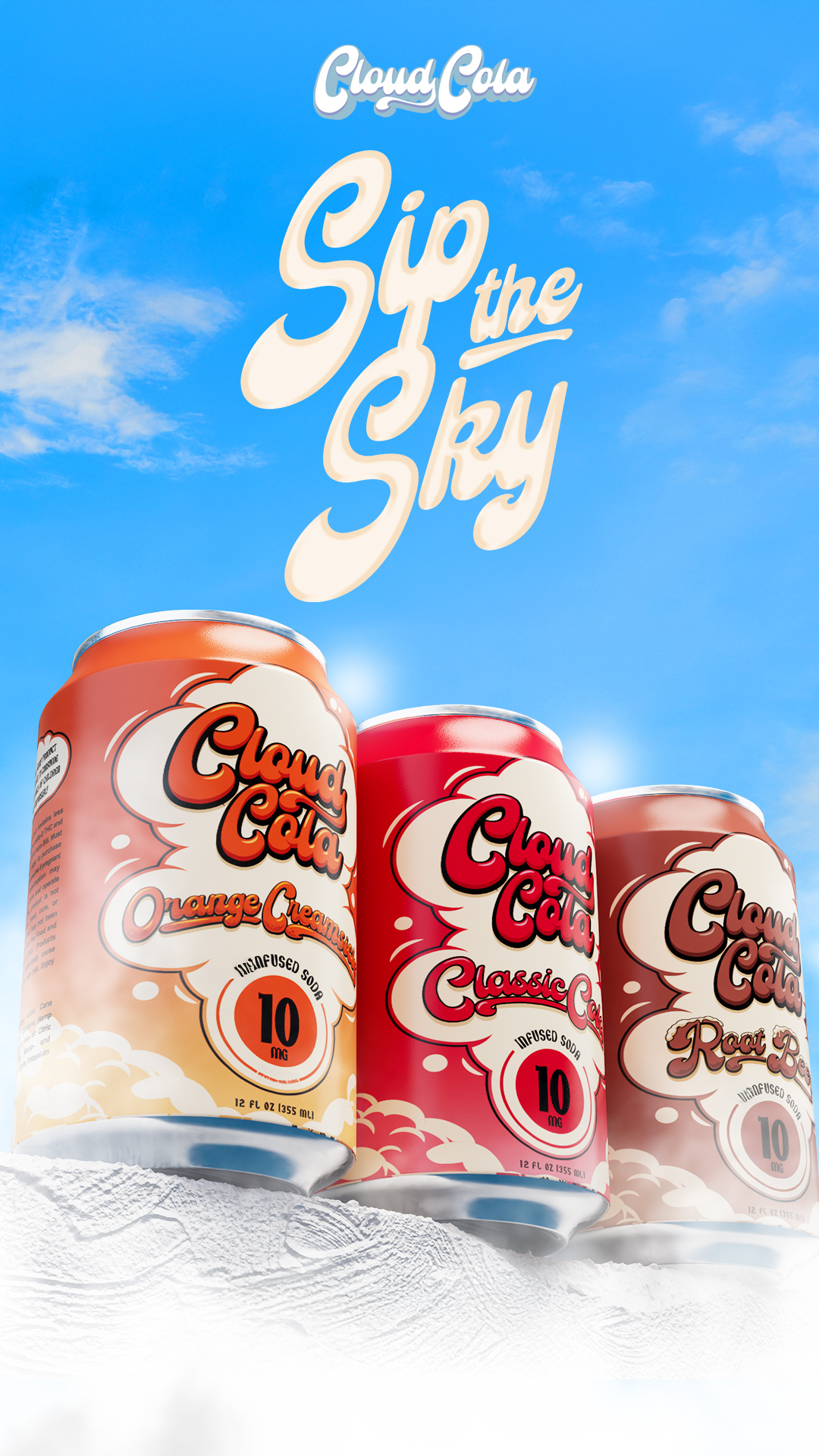Absorption Rates of THC-Infused Beverages

When it comes to consuming cannabis, understanding how quickly THC enters your system is crucial for managing your experience. While smoking or vaping delivers fast-acting effects, edibles like THC-infused beverages present a different scenario. The absorption rate of THC from drinks can vary depending on several factors, leading to questions about how they compare to other edibles.

Factors Affecting Absorption
When it comes to consuming cannabis, understanding how quickly THC enters your system is crucial for managing your experience. While smoking or vaping delivers fast-acting effects, edibles like THC-infused beverages present a different scenario. The absorption rate of THC from drinks can vary depending on several factors, leading to questions about how they compare to other edibles.
THC-infused beverages generally take longer to take effect than other edibles, such as gummies or chocolate, with effects typically noticeable within 30 minutes to 2 hours. Here are some factors that influence the absorption rate of THC from drinks:
- Fat Content: THC is fat-soluble, meaning it’s absorbed more efficiently when consumed with fats. Beverages with higher fat content, such as milk or coconut milk based drinks, will likely have a faster onset of effects.
- Carbonation: Carbonated beverages may lead to quicker absorption due to the increased surface area for THC to dissolve in and be absorbed through the stomach lining.
- Acidity: The acidity level of a beverage can affect THC absorption. Highly acidic drinks may hinder absorption, while less acidic options could promote it.
- Individual Metabolism: Just like any other substance, individual metabolism plays a role in how quickly THC is processed and absorbed.
The Role of the Stomach Acid
When comparing the absorption rate of THC from beverages to other edibles, several factors come into play.
- Solubility: THC’s fat-soluble nature means it needs a carrier like fat to be absorbed effectively. Foods high in fat, common in many edible forms, aid in this process.
- Stomach Acid: The stomach’s acidic environment can both aid and hinder THC absorption. While some studies suggest acidity might slow down the absorption process, it also helps break down the beverage, making the THC molecules more available for absorption.
- Gastrointestinal Transit Time: How quickly food moves through your digestive system impacts absorption. Edibles with longer digestion times may take longer to release THC into the bloodstream, potentially leading to a slower onset compared to beverages that are absorbed faster.
Liver Metabolism
The liver plays a crucial role in metabolizing THC, breaking it down into other compounds that eventually leave the body. This process can influence how long THC’s effects last. Once THC is absorbed, it travels through the bloodstream to the liver where it undergoes enzymatic reactions. The primary enzyme responsible for metabolizing THC is CYP2C9.
The rate at which the liver processes THC can vary between individuals due to factors like genetics, diet, and other medications being taken.
Blood Flow and Solubility
When comparing the absorption rate of THC from beverages to other edibles, several factors come into play.
- THC’s fat-soluble nature means it needs a carrier like fat to be absorbed effectively. Foods high in fat, common in many edible forms, aid in this process.
- The stomach’s acidic environment can both aid and hinder THC absorption. While some studies suggest acidity might slow down the absorption process, it also helps break down the beverage, making the THC molecules more available for absorption.
- How quickly food moves through your digestive system impacts absorption. Edibles with longer digestion times may take longer to release THC into the bloodstream, potentially leading to a slower onset compared to beverages that are absorbed faster.
The liver plays a crucial role in metabolizing THC, breaking it down into other compounds that eventually leave the body. This process can influence how long THC’s effects last. Once THC is absorbed, it travels through the bloodstream to the liver where it undergoes enzymatic reactions. The primary enzyme responsible for metabolizing THC is CYP2C9.
The rate at which the liver processes THC can vary between individuals due to factors like genetics, diet, and other medications being taken.
Comparison to Other Edibles
When comparing the absorption rates of THC from beverages to other edibles, several key factors emerge.
THC Gummies and Candies
THC-infused beverages generally take longer to take effect compared to edibles like gummies or chocolates, with effects typically noticeable within 30 minutes to 2 hours.
- Solubility: THC’s fat-soluble nature means it needs a carrier like fat to be absorbed effectively. Foods high in fat, common in many edible forms, aid in this process.
- Stomach Acid: The stomach’s acidic environment can both aid and hinder THC absorption. While some studies suggest acidity might slow down the absorption process, it also helps break down the beverage, making the THC molecules more available for absorption.
- Gastrointestinal Transit Time: How quickly food moves through your digestive system impacts absorption. Edibles with longer digestion times may take longer to release THC into the bloodstream, potentially leading to a slower onset compared to beverages that are absorbed faster.
Baked Goods and Chocolate
THC-infused beverages generally take longer to take effect than other edibles, such as gummies or chocolate, with effects typically noticeable within 30 minutes to 2 hours. This difference in absorption rates can be attributed to several factors related to the nature of the food matrix and individual physiology.
THC’s fat-soluble nature means it needs a carrier like fat to be absorbed effectively. Many edible forms, such as gummies or chocolates, are naturally higher in fat content, providing this necessary carrier. Beverages, on the other hand, often lack significant fat content unless specifically formulated with fats like milk or coconut milk.
The stomach’s acidic environment plays a role in both aiding and hindering THC absorption. While some research suggests acidity might slow down the process, it also helps break down the beverage, potentially making the THC molecules more available for absorption. The rate at which food moves through your digestive system, known as gastrointestinal transit time, also influences absorption. Edibles with longer digestion times may take longer to release THC into the bloodstream, potentially leading to a slower onset compared to beverages absorbed faster.
Oils and Tinctures
When comparing the absorption rates of THC from beverages to other edibles, several key factors emerge.
- Solubility: THC’s fat-soluble nature means it needs a carrier like fat to be absorbed effectively. Foods high in fat, common in many edible forms, aid in this process.
- Stomach Acid: The stomach’s acidic environment can both aid and hinder THC absorption. While some studies suggest acidity might slow down the absorption process, it also helps break down the beverage, making the THC molecules more available for absorption.
- Gastrointestinal Transit Time: How quickly food moves through your digestive system impacts absorption. Edibles with longer digestion times may take longer to release THC into the bloodstream, potentially leading to a slower onset compared to beverages that are absorbed faster.
THC-infused beverages generally take longer to take effect than other edibles, such as gummies or chocolate, with effects typically noticeable within 30 minutes to 2 hours. This difference in absorption rates can be attributed to several factors related to the nature of the food matrix and individual physiology.
Timeline for Effects
The way cannabis edibles are absorbed into your system plays a big role in how quickly you feel their effects. While smoking or vaping delivers THC rapidly, consuming it through edibles like drinks requires some patience. Understanding how factors like fat content, carbonation, acidity, and individual metabolism affect absorption is key to managing your experience with THC beverages.
Onset Time of THC Soda Compared to Other Edibles
THC-infused beverages generally take longer to kick in compared to other edibles like gummies or chocolate, usually taking 30 minutes to 2 hours for effects to be noticeable. This difference is due to several factors related to how the body processes THC from different types of edibles.
The solubility of THC matters a lot. THC is fat-soluble, meaning it needs fat to be absorbed effectively. Many edibles are naturally higher in fat, which helps with this process. Beverages, however, often lack significant fat content unless they are specifically formulated with fats like milk or coconut milk.
The stomach’s acidity also plays a role. While some studies suggest that stomach acid might slow down THC absorption, it also helps break down the beverage, potentially making THC molecules more readily absorbed.
Lastly, how quickly food moves through your digestive system (gastrointestinal transit time) influences absorption. Edibles with longer digestion times may take longer to release THC into the bloodstream compared to beverages that are absorbed faster.
Peak Effect and Duration
The absorption rate of THC from drinks can vary depending on factors like fat content, carbonation, acidity, and individual metabolism. Effects typically begin within 30 minutes to 2 hours.
Compared to edibles like gummies or chocolates, THC-infused beverages generally take longer to take effect due to differences in how the body processes THC from different food matrices.
THC’s fat-soluble nature means it needs a carrier like fat for efficient absorption. Many edibles are naturally higher in fat, aiding this process. Beverages often lack significant fat content unless specifically formulated with fats like milk or coconut milk.
The stomach’s acidic environment plays a dual role: while some research suggests acidity might slow down absorption, it also helps break down the beverage, potentially making THC molecules more available for absorption.
Gastrointestinal transit time – how quickly food moves through your digestive system – also influences absorption. Edibles with longer digestion times may release THC into the bloodstream more slowly compared to beverages absorbed faster.
Considerations and Recommendations
When comparing the absorption rate of THC from beverages to other edibles, several key factors emerge:
* **Solubility:** THC is fat-soluble, meaning it requires a fat carrier for efficient absorption. Many edibles naturally contain high fat content, facilitating this process. Beverages often lack sufficient fat unless formulated with additions like milk or coconut milk.
* **Stomach Acid:** Stomach acidity can both aid and hinder THC absorption. While some studies suggest acidity may slow down absorption, it also plays a role in breaking down the beverage, potentially making THC molecules more readily available for absorption.
* **Gastrointestinal Transit Time:** The speed at which food moves through your digestive system (gastrointestinal transit time) influences absorption. Edibles with longer digestion times may take longer to release THC into the bloodstream compared to beverages that are absorbed more quickly.
THC-infused beverages generally take longer to exert their effects compared to other edibles like gummies or chocolate, typically noticeable within a range of 30 minutes to 2 hours. This difference in absorption rates can be attributed to the interplay of these factors related to the nature of the food matrix and individual physiology.
Cloud Cola’s THC soda – the ultimate way to enjoy cannabis
- How Kratom Capsules Can Help You Sleep Better And Relieve Stress - August 14, 2025
- How Does Cosmelan Depigmentation Peel Reduce Melasma In The UK - August 10, 2025
- How Baby Botox Enhances Your Natural Beauty In Kingston Upon Thames - August 7, 2025
